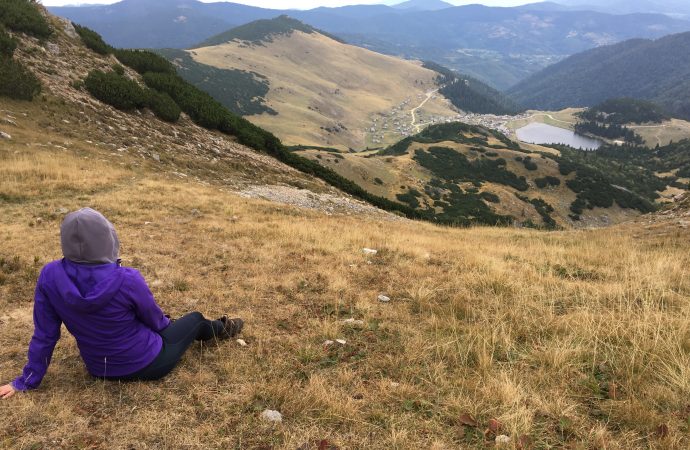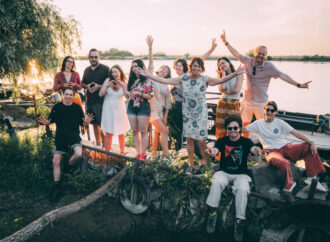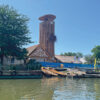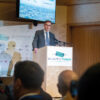When you think of Bosnia and Herzegovina, war automatically comes to your mind. But this young European country wants to show the world how beautiful it actually is. We visit the historically interesting capital and take a trip to the country’s sumptuous nature. “Tomorrow, we’re driving to Prokoško Jezero”, says Faruk Osmanović, owner of the
When you think of Bosnia and Herzegovina, war automatically comes to your mind. But this young European country wants to show the world how beautiful it actually is. We visit the historically interesting capital and take a trip to the country’s sumptuous nature.
“Tomorrow, we’re driving to Prokoško Jezero”, says Faruk Osmanović, owner of the travel agency Superb Adventures Tours, while we’re enjoying the unforgettable sunset over Sarajevo. We’re sitting in the garden of the restaurant Vidikovac Zmajevac, which overlooks the town. I’m not only rewarded with a good espresso, but also with an incredible view of Bosnia and Herzegovina’s capital. It seems to be slumbering peacefully in the valley. The tranquillity is interrupted by the bells of Christian churches and the calls of muezzins. Sometimes you hear both at once.
Multicultural gem in the heart of Europe
Sarajevo isn’t big, but its history is all the more magnificent. Archaeological findings prove that the site has been settled since the Neolithic period. In antiquity, Illyrians lived in the area around the Miljacka river that flows through the city. Then the Romans arrived, triumphed, and the country became a Roman province. During the Middle Ages, the city didn’t play an important role in the Kingdom of Bosnia. That changed when the Ottomans invaded. Isa-Beg Ishaković, who is regarded as the founder of the city, had his “saray” (i.e. residence, palace) built here. That’s how the city’s name was born. He lovingly called it the “flower among cities”. Thanks to a decree banning attacks on and destruction of religious institutions, all the city’s places of worship now coexisted in peace. So, it doesn’t come as a surprise that Sephardic Jews from the Iberian Peninsula also found a new home here after their expulsion in 1492. They built the Old Synagogue and brought a Haggadah with them that is now considered to be the world’s oldest. You can admire it in the National Museum. The Jewish cemetery in the hills of Sarajevo is the second largest in the world. Only here, the oldest tombstones represent a sleeping lion. Today, Jewish institutions in Sarajevo still don’t need police protection. In 1878, the Congress of Berlin places Bosnia and Herzegovina under Austro-Hungarian administration. Grand buildings like the Old Town Hall Vjecnica or the Post Office, now an art academy, are erected. In 1914, the city becomes famous when the student Gavrilo Princip assassinates the heir to the Austro-Hungarian throne, Franz Ferdinand, and his wife Sophie. The hasty media machine contributed to the rumour that this individual young man started the First World War. This idea is rejected during an international congress 100 years later. It was actually the newly industrialized countries who were aching to try out new weapon systems. In 1984, the eyes of the world are on Sarajevo as it hosts the Winter Olympics. No-one could have suspected that from 1992 to 1995, the exact same place would live through the longest siege of the 20th century. The Historical Museum gives an idea of how the inhabitants survived for 1425 days without running water, electricity or heating systems. More than all others, children suffered terribly from the war. The War Childhood Museum, unique in the world, gives an insight into the mental world of war children. Faruk Osmanović is one of these children. He holds a degree in veterinary medicine and spent the whole war in Sarajevo. “It happened, and I can’t change it. It won’t help the country if everybody runs away. So, I had the idea of founding a travel agency. To show our guests the beauty of this country. I’ve fulfilled this dream and live it every day.” Faruk now welcomes guests from all over the world. With his colleagues Amir and Elmedin, we drive to Prokoško Jezero.
Prokoško Jezero – almost above the clouds
The 80-km-trip takes just over two hours. We soon reach the Vranica mountain range. A gravel road takes us uphill. Faruk stops the car and lets me get out alone. “Walk on to the rock over there, but be careful not to slip!” I’ve seen many views, and you end up thinking that what you’ve seen can’t be surpassed. Wrong, I think, and am grateful for it. Before me lies the view of a clear lake surrounded by little wooden huts. We drive down to the settlement. The huts originally provided shelter for shepherds and berry pickers. They’ve partly kept this function, yet the overwhelming majority is used for touristic purposes, as accommodation or restaurants. “We’ll drive up to the top, and when we get back down, our lunch will be ready,” Faruk rejoices. “I ordered Zeljanica (flaky pastry filled with spinach and cheese).” The meals are freshly made-to-order, and the ladies time their preparation so that their guests receive them steaming hot. We stop at a height of 1,900 metres. Now, we’ll continue in our hiking boots. After about an hour, we reach a hill that doesn’t look spectacular. “Okay, now go ahead and enjoy.” I walk, look and am astonished. The view on the glacial lake magnificently unfolds before my eyes. From this altitude, I can see its true shape: a heart! We climb on a rock formation and sit there for a long time until fog settles on the lake. It looks magical and we feel as if we’re sitting in the clouds. But we have to go back. The boys to Sarajevo, and I to Germany. Back home, I receive a video Faruk made of our trip. He had brought along his drone. Incredible scenery. Among them the rocks from which you first see the lake. It is only now that I understand how phenomenal nature in this corner of the Earth is. Sarajevo and Bosnia and Herzegovina want to be explored. I’ll gladly join in.
Mirella Sidro, journalist, Augsburg
www.superbadventures.com



















Leave a Comment
Your email address will not be published. Required fields are marked with *